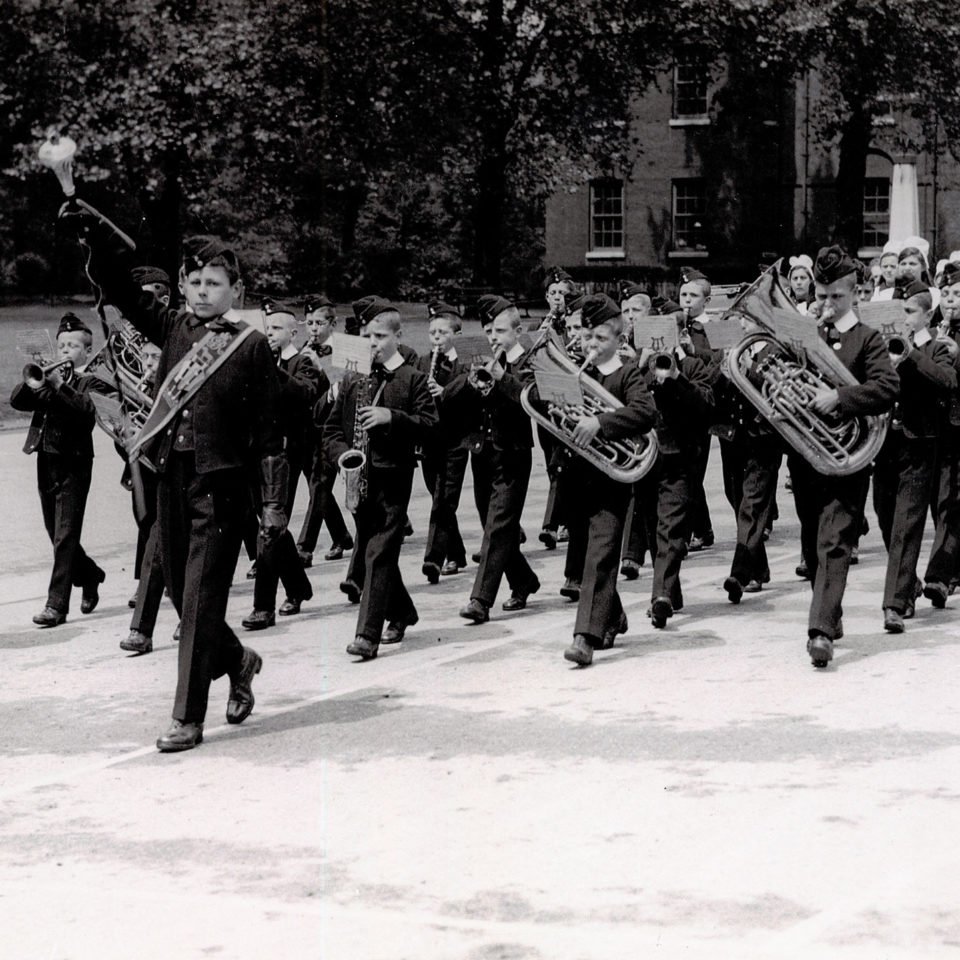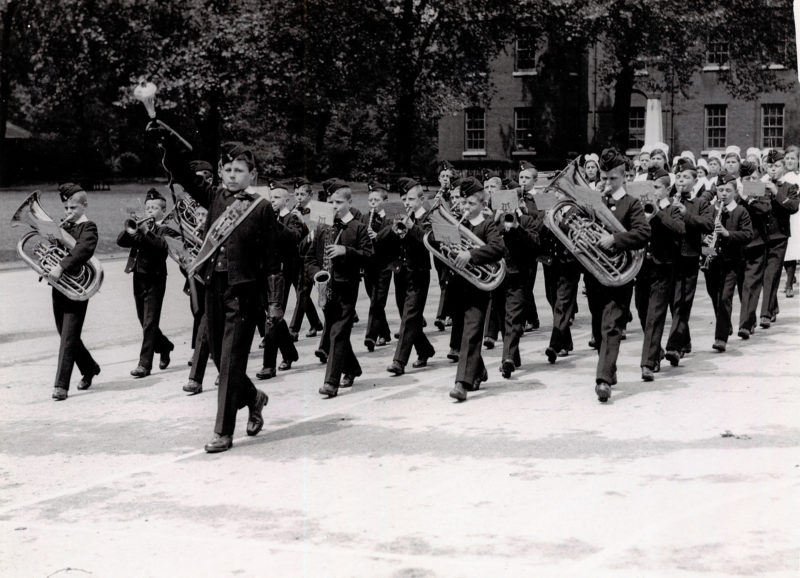About the object
The Boys’ Band was created in 1847. The initial aims were to improve conduct and discipline and to give the boys a useful life skill, but the Hospital also hoped that access to a musical education would have a ‘softening’ influence on the boys. Despite a shaky beginning, it became known for the quality of musicians it produced.
The band typically consisted of about thirty boys at one time. They practised six days a week, played and marched before each lunch hour, and performed in the grounds every Thursday. They were also responsible for cleaning and looking after their instruments. A new Band Room was constructed for them in 1863, and when the Hospital moved to Berkhamsted in the 1930s it had a purpose-built practice room included.
Many boys went on to become musicians in professional military bands, and the success of the Boys’ Band led to bandmasters visiting the Hospital to select the most talented children. By the start of World War I over 80% of boys leaving the Hospital were recruited into military bands.
Charles Nalden (1908-2002), child number 23,062, was one such boy. He joined the Hospital band in 1920 at the age of twelve, learning to play the cornet. On leaving the Hospital, Charles joined His Majesty’s Royal Artillery (Mounted) Band and rose to become Bandmaster. During his 26 years’ army service he also studied at the prestigious Kneller Hall (the Royal Military School of Music) and gained a Doctorate in Music. On retiring from army life he took up a lectureship at Auckland University in New Zealand and established the country’s first conservatorium of music.

